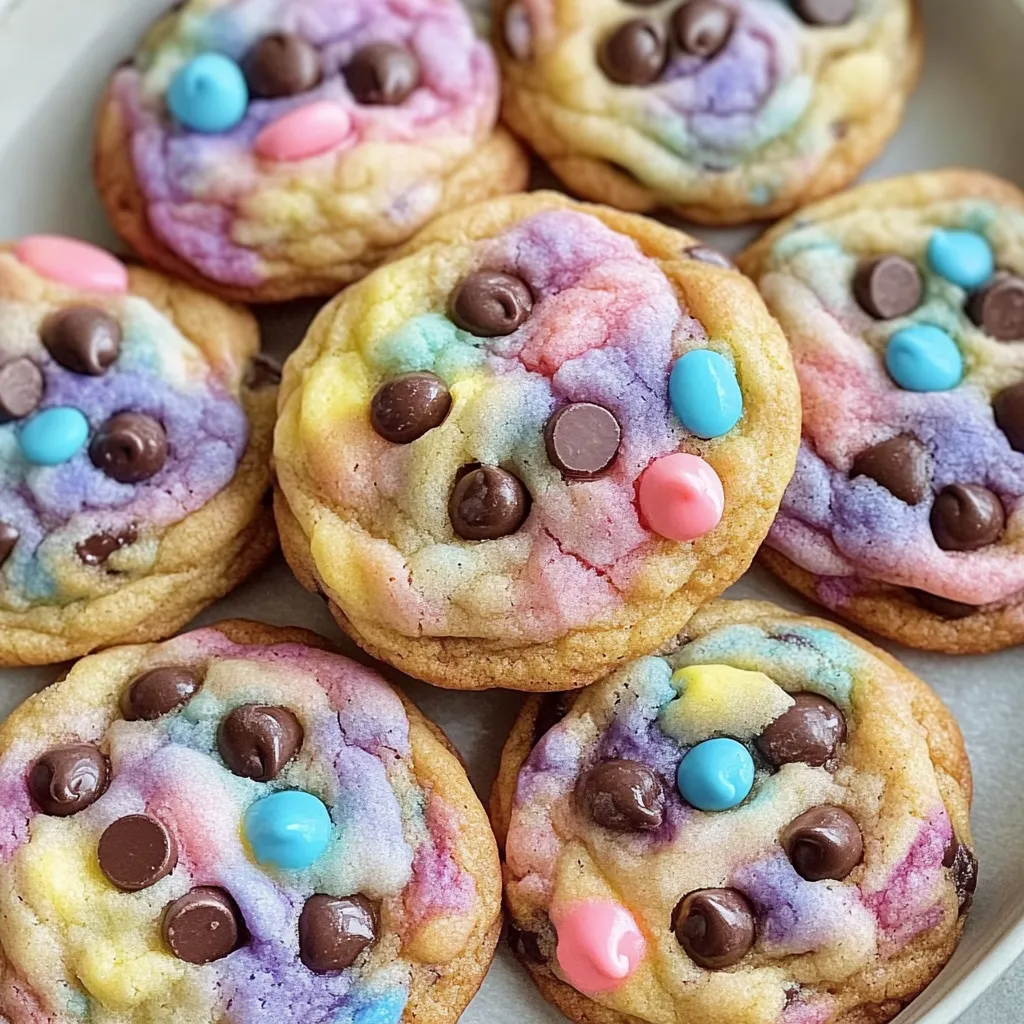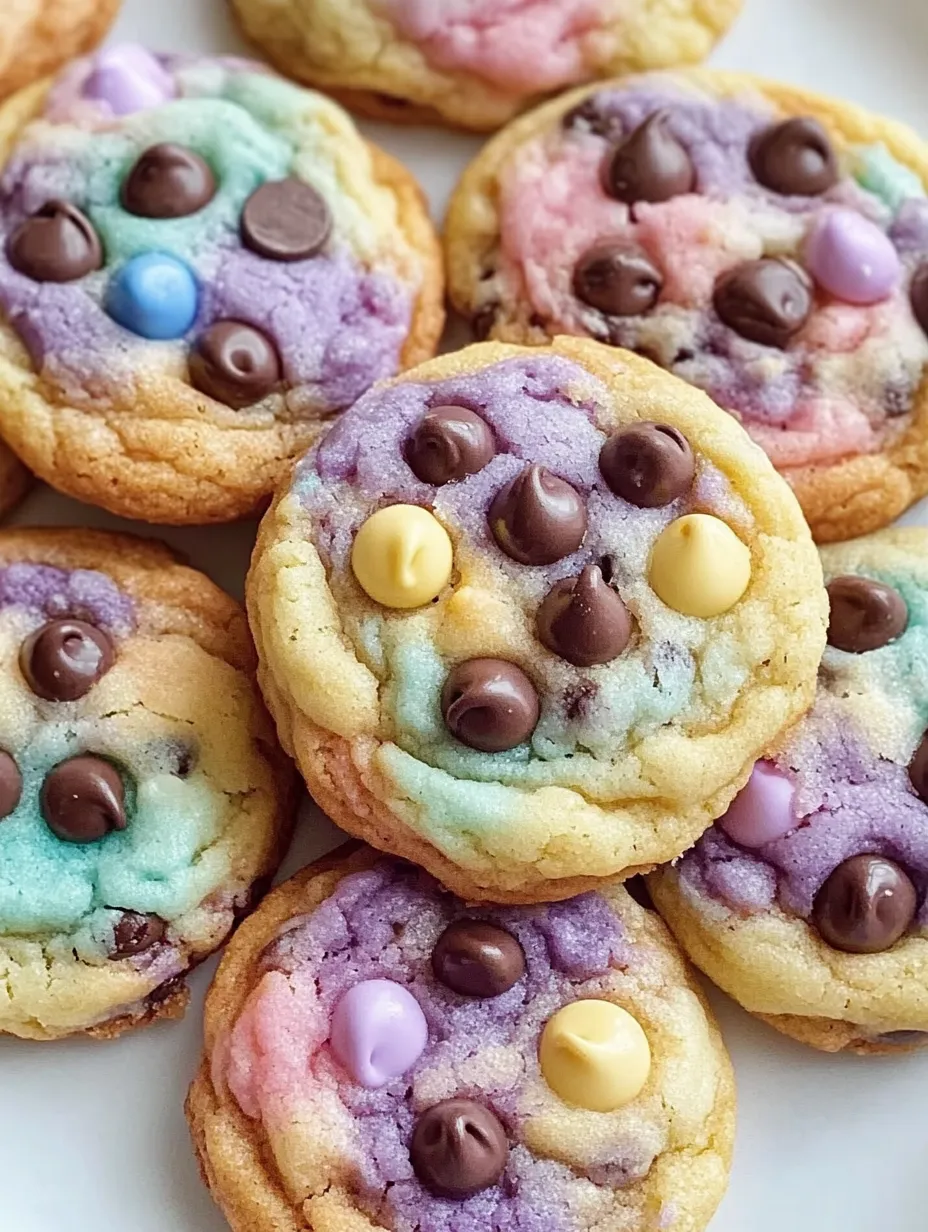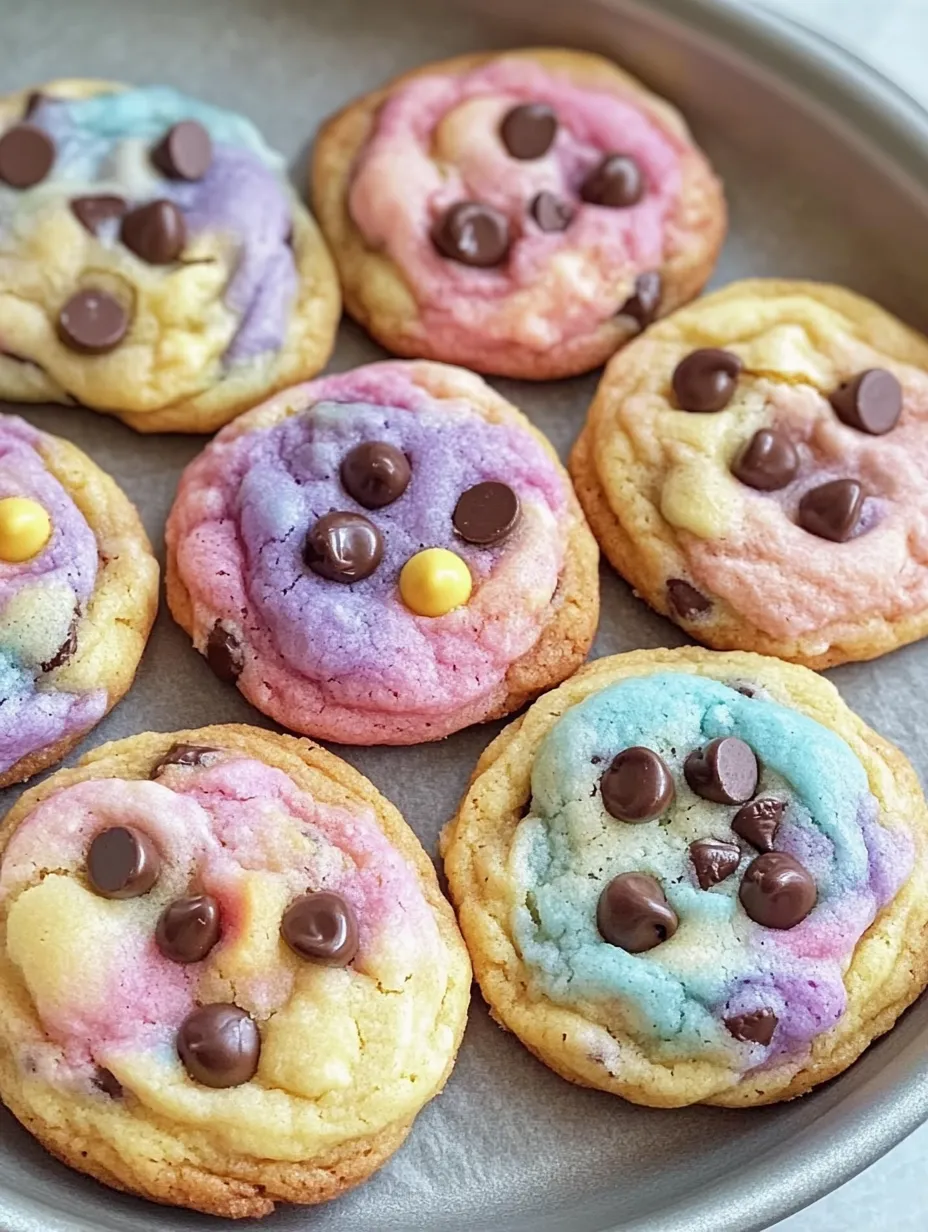 Pin it
Pin it
I stumbled upon this Easter chocolate chip cookie recipe last spring when I needed something fun to make with my kids during spring break. The combination of classic chocolate chip cookies with that creative pastel marbling creates these incredible treats that are as beautiful as they are delicious. They've become our Easter tradition, bringing just as much joy in the creating as in the eating.
My neighbor's children were playing with mine when we made these, and their eyes went wide with excitement when they saw the colorful dough. Their mom texted me later asking for the recipe because her kids couldn't stop talking about the "rainbow cookies." Sometimes the simplest twists on classic recipes create the biggest impact.
Simple Ingredients
- Butter and sugars - The foundation for that perfect chewy texture we all love
- Gel food coloring - Creates more vibrant colors than liquid without affecting the dough consistency
- Chocolate chips - The classic mix-in that balances the sweetness beautifully
- Vanilla extract - Adds that warm, aromatic depth that makes homemade cookies special
- Standard cookie ingredients - Nothing fancy required beyond your basic cookie staples
 Pin it
Pin it
Cookie Creation
- Butter Temperature
- The butter should be properly softened—not melted or too firm. I leave mine out for about an hour before baking, or if I'm in a hurry, I cut it into cubes which softens it faster. When creamed with the sugars, it should become noticeably lighter in both color and texture. This creates the perfect base for chewy cookies. I once tried to rush this with partially melted butter, and while the cookies tasted fine, they spread too much and lost that perfect texture.
- Mixing Method
- Adding the eggs one at a time allows each to be fully incorporated before adding the next, creating a smoother, more cohesive dough. When adding the dry ingredients, I mix just until the flour disappears—overmixing develops gluten which can make cookies tough instead of tender. I usually switch from my mixer to a wooden spoon for this final incorporation to avoid overmixing. A few small lumps are actually fine and will disappear during baking.
- Coloring Strategy
- Gel food coloring is definitely the way to go for these cookies—liquid coloring can add too much moisture and affect the texture. I portion the dough into four equal parts using a kitchen scale for accuracy, then use a toothpick to add small amounts of color, working it in gradually until I reach the desired pastel shade. For Easter, I stick with classic pastel pink, purple, yellow, and blue, but you could use any colors that match your celebration. The key is keeping them light and springy rather than too vibrant.
- Marbling Technique
- This is where the magic happens, and there's no wrong way to do it. I take small pieces of each colored dough (about a tablespoon of each), loosely press them together, and give them just one or two gentle twists to create that marbled effect without fully blending the colors. Overworking the dough at this stage can cause the colors to mix completely, losing that beautiful swirled look. Each cookie will be unique, which is part of their charm. My kids love seeing how different each one turns out.
- Baking Precision
- These cookies bake quite quickly because of the multiple handling stages the dough goes through. I start checking at 9 minutes, though 10-12 is usually perfect in my oven. They're done when the edges are just set and lightly golden, but the centers still look slightly underdone—they'll continue cooking from residual heat after removal from the oven. If you wait until they look fully done, they'll end up overbaked and crispy rather than soft and chewy.
- Cooling Process
- That 5-minute rest on the baking sheet allows the cookies to set up enough to transfer without breaking. The cookies will be very soft when first removed from the oven, which is exactly what you want for that perfect chewy texture once cooled. Transferring to a wire rack after the initial rest prevents the bottoms from getting soggy from trapped steam. I've found that these cookies actually taste even better the next day, as the flavors meld and the texture becomes perfectly soft and chewy.
My husband, who typically passes on "fancy" cookies in favor of classic chocolate chip, actually said these were even better than regular chocolate chip cookies because the marbling process creates sections with different levels of chocolate intensity. There's something about that interplay of colors and flavors that elevates an everyday treat into something special.
Perfect Pairings
Serve these colorful cookies with milk in pastel-colored glasses for an extra festive touch. For Easter gatherings, arrange them on a platter with fresh berries for a beautiful spring dessert display. Include them in Easter baskets along with other treats for a homemade touch. My kids love them as an after-school snack during the Easter season, while I enjoy them with afternoon coffee or tea.
Creative Variations
Try using white chocolate chips or pastel candy-coated chocolate pieces for extra spring vibes. Add a teaspoon of almond extract along with the vanilla for a more sophisticated flavor. For a confetti effect, mix in colorful sprinkles with the chocolate chips. Last Easter, I experimented with dividing the dough in half, leaving one half natural and marbling the other half with just one or two colors, then combining them for a more subtle effect that was equally beautiful.
 Pin it
Pin it
I've made these Easter chocolate chip cookies for everything from classroom parties to family gatherings, and they never fail to bring smiles. There's something magical about the way the pastel colors swirl together, creating treats that are as beautiful as they are delicious. My daughter has started requesting them for playdates and birthday parties year-round, saying we can just change the colors to match any occasion. Sometimes the recipes that bring the most joy are the ones that combine familiar favorites with just enough creative twist to make them feel special and new.
Frequently Asked Questions
- → What type of food coloring works best for these cookies?
- Gel food coloring is recommended for these cookies as it provides vibrant colors without adding too much liquid to the dough. Liquid food coloring can work in a pinch, but you may need to add a bit more flour if the dough becomes too wet. Avoid powder food coloring as it can be difficult to blend evenly.
- → Can I make these cookies ahead of time?
- Absolutely! You can prepare the cookie dough up to 3 days in advance and store it covered in the refrigerator. You can also freeze the shaped cookie dough balls for up to 3 months. When ready to bake, you can bake them straight from frozen, just add 1-2 minutes to the baking time.
- → How do I get the best marbled effect?
- For the best marbled effect, don't overmix the colored portions when combining them. Gently press different colored pieces together without kneading or overworking the dough. This keeps the colors distinct rather than blending into a single shade. If the colors start to mix too much, chill the dough for 15-20 minutes before continuing.
- → Can I use different mix-ins besides chocolate chips?
- Yes! White chocolate chips look beautiful with the pastel colors, or try colorful Easter M&Ms, chopped mini chocolate eggs, or pastel sprinkles. You can also use a combination of different chocolate chips for variety.
- → How do I store these cookies to keep them soft?
- Store these cookies in an airtight container at room temperature for up to 5 days. To keep them extra soft, add a slice of bread to the container (replace it when it becomes stale). For longer storage, freeze baked cookies in an airtight container for up to 3 months and thaw at room temperature when ready to enjoy.
